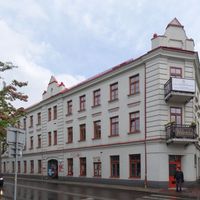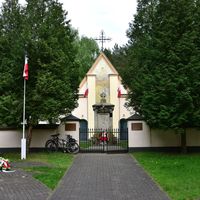Wolomin
6.55

Overview
The Wołomin Municipality, located in the Masovian Voivodeship, within the Wołomin County, is an urban-rural municipality with a rich history. Its current structure was established following the reactivation of municipalities on January 1, 1973, and the seat of the municipality is the town of Wołomin. From 1975 to 1998, the municipality belonged to the Warsaw Voivodeship. The municipality comprises 15 village councils (sołectwa) and 13 housing estates, and according to data from the end of 2019, it had a population of 51,884. Notably, in 2013, the municipality was known for having the highest population density in Poland, with 835 people per square kilometer. It is also worth noting that the Wołomin Municipality covers an area of 62 km², which constitutes nearly 6.5% of the county's area.
Architecturally, the municipality boasts many interesting structures, including the Neo-Gothic Roman Catholic Church of Our Lady of Częstochowa and an 18th-century manor house in the village of Czarna. In the town of Wołomin, there is also the "Rochnówka" Villa, known as the House Under the Acacias, dating back to 1883. A point of interest is the Zofia and Wacław Nałkowski Museum, which combines aspects of the region's culture and history. The municipality also offers numerous natural attractions, such as the Grabicz Nature Reserve and the Białe Błota Peat Bogs, which are home to diverse ecosystems, and the Cemetery of the Fallen in the Battle of Warsaw in Ossów, a testament to the area's rich military history. The Wołomin Municipality further enriches its historical narrative with the Museum of the Battle of Warsaw 1920, currently under construction, highlighting the ongoing historical and cultural development of the area.
Neighboring municipalities include Klembów, Kobyłka, Poświętne, Radzymin, and Zielonka, fostering opportunities for regional cooperation. With its diverse architectural and cultural attractions, the Wołomin Municipality is a significant point of interest in the Masovian region.
Location
You can also find here:
2025 Wizytor | All Rights Reserved

